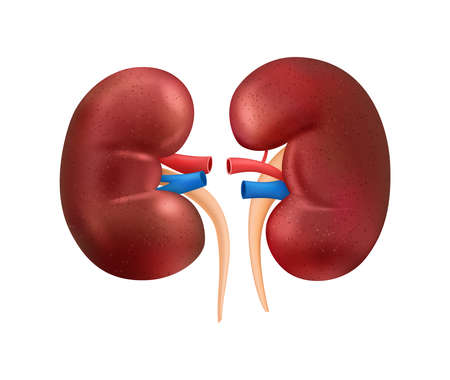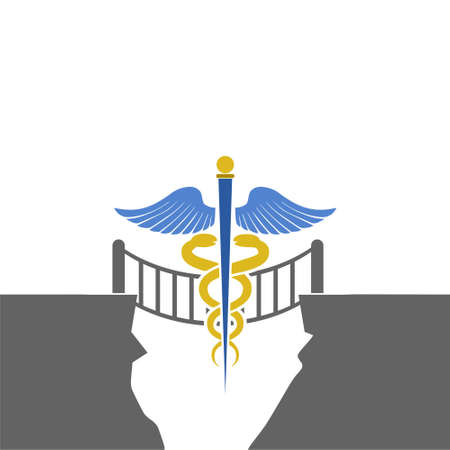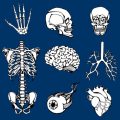1. Introduction to Multidisciplinary Teams in Spinal Cord Injury Rehabilitation
Spinal cord injury (SCI) is a life-changing event that affects thousands of Americans every year. These injuries can impact mobility, independence, and quality of life. In the United States, SCI rehabilitation is not just about physical recovery—it’s about helping people regain their best possible level of function and reintegrate into their communities. To make this happen, a team-based approach is essential.
What Is a Multidisciplinary Team?
A multidisciplinary team brings together professionals from different specialties to work toward a shared goal: supporting each patient’s recovery journey after SCI. Each team member has unique skills and expertise, and by collaborating closely, they can address the complex needs of individuals living with spinal cord injuries.
Why Is Teamwork So Important in SCI Rehabilitation?
No single professional can manage all the challenges that come with SCI. People may need help with movement, bladder and bowel care, communication, emotional support, and community reintegration. When everyone works together—patients, families, doctors, therapists, nurses, social workers—the results are better outcomes and more personalized care.
Key Benefits of Collaborative Multidisciplinary Care
| Benefit | Description |
|---|---|
| Comprehensive Care | Addresses medical, physical, psychological, and social needs all at once. |
| Personalized Plans | Treatment plans are tailored to each individual’s goals and situation. |
| Improved Communication | Regular team meetings ensure everyone is on the same page for patient progress. |
| Smoother Transitions | Makes moving from hospital to home or community settings easier and safer. |
| Better Patient Outcomes | Research shows teamwork leads to higher satisfaction and better health results. |
The American Approach: Focus on Inclusion and Independence
In the U.S., there is a strong focus on helping people with SCI become as independent as possible. Multidisciplinary teams not only provide clinical care but also empower patients to set their own goals—whether that’s going back to school or work, participating in adaptive sports, or reconnecting with friends and family. This holistic approach is a cornerstone of American rehabilitation programs and reflects the values of choice, dignity, and community participation.
2. Key Roles Within Multidisciplinary Teams
Spinal cord injury (SCI) rehabilitation involves a team of professionals who bring different expertise to help patients recover and adapt. Each member plays a unique role, working together to provide comprehensive care. Understanding these roles can help patients and families know what to expect during the rehab process.
Core Team Members and Their Responsibilities
| Team Member | Main Responsibilities |
|---|---|
| Physician (Physiatrist or Rehab Doctor) | Leads the medical management of SCI, monitors health conditions, prescribes medications, coordinates overall treatment plans, and communicates with other team members about medical needs. |
| Physical Therapist (PT) | Focuses on improving mobility, strength, balance, and physical function. Designs exercise programs, helps with wheelchair training, transfers, and walking if possible. |
| Occupational Therapist (OT) | Assists patients in regaining independence in daily activities like dressing, bathing, eating, and home management. Recommends adaptive equipment and trains in their use. |
| Nurse | Provides day-to-day care including medication administration, skin care, bladder and bowel management, and patient education about self-care after discharge. |
| Psychologist or Counselor | Supports emotional well-being, helps patients cope with life changes after injury, addresses depression or anxiety, and provides counseling for both individuals and families. |
| Social Worker | Assists with discharge planning, connects families to community resources, helps navigate insurance issues, and offers support for social adjustment. |
| Recreation Therapist | Encourages participation in leisure activities to improve quality of life. Adapts sports or hobbies for accessibility. |
| Speech-Language Pathologist (if needed) | Helps with communication or swallowing difficulties that may occur with higher-level spinal cord injuries. |
Collaboration in Action
The multidisciplinary team meets regularly to discuss patient progress and adjust goals as needed. For example:
- A PT might notice new muscle weakness and alert the physician to review medications.
- An OT could suggest adaptive tools for eating independently at home.
- The nurse teaches family members how to care for skin and prevent pressure injuries before discharge.
- The psychologist leads group sessions for peer support among patients with similar injuries.
- The social worker coordinates home modifications and connects the family with local support groups.
The Value of Teamwork in SCI Rehab
No single professional can address all the needs of someone recovering from a spinal cord injury. By working together as a multidisciplinary team, each expert contributes their specialized knowledge—ensuring the best possible outcomes for patients as they rebuild their lives after injury.

3. Collaboration and Communication Strategies
Effective collaboration and communication are at the heart of successful spinal cord injury (SCI) rehabilitation in the United States. Multidisciplinary teams—including physicians, nurses, physical therapists, occupational therapists, psychologists, social workers, and others—work together to provide coordinated care for each patient. Let’s explore some best practices commonly used in American healthcare settings.
Best Practices for Team Communication
Clear and timely communication among team members is essential. Here are some strategies widely adopted:
- Regular Interdisciplinary Meetings: Teams often hold weekly or bi-weekly meetings to discuss patient goals, progress, and challenges.
- Shared Care Plans: Creating a unified care plan ensures every member understands their role and the overall objectives.
- Open Feedback Channels: Encouraging all team members to share observations or concerns helps identify issues early and improve outcomes.
Common Communication Tools Used in SCI Rehabilitation Teams
| Tool | Description | Benefits |
|---|---|---|
| Electronic Health Records (EHRs) | Centralized digital records accessible by all team members | Improves information sharing, reduces errors, enhances continuity of care |
| Secure Messaging Platforms | HIPAA-compliant messaging apps for quick updates | Saves time, enables instant communication, keeps records of interactions |
| Case Conferences | Sit-down discussions with all providers involved in a case | Facilitates comprehensive planning and problem-solving |
Care Coordination Across Settings
SCI rehabilitation often involves transitions—from acute hospitals to inpatient rehab centers, outpatient clinics, and home care. Effective coordination ensures no details are missed during these transitions. In the U.S., this typically includes:
- Case Managers: Professionals dedicated to overseeing the patient’s journey, scheduling appointments, and arranging resources.
- Discharge Planning: Early planning for post-hospital care involving both the team and family to avoid gaps in support.
- Liaison Roles: Specialists who connect inpatient teams with outpatient providers to maintain seamless care.
The Role of Electronic Health Records (EHRs)
EHRs are standard in American healthcare. They allow all authorized providers to access up-to-date medical information instantly. This reduces duplication of tests, streamlines medication management, and ensures everyone is informed about the latest changes in a patient’s condition or treatment plan.
Family Involvement in the Rehab Process
The involvement of families is highly valued in American rehabilitation settings. Families provide crucial emotional support and help ensure that care plans are followed at home. Best practices include:
- Family Education Sessions: Teaching families about SCI, equipment use, daily care needs, and potential complications.
- Counseling and Support Groups: Offering resources for family mental health and coping strategies.
- Inclusion in Goal-Setting: Actively involving family members when setting rehabilitation goals so they can support progress outside the clinic.
A Snapshot: Family Involvement Activities Table
| Activity | Description | Main Benefit |
|---|---|---|
| Caregiver Training Workshops | Hands-on sessions for family on transfers, mobility aids, and personal care tasks | Boosts confidence; improves patient safety at home |
| Educational Materials Distribution | User-friendly booklets and videos explaining SCI recovery steps and warning signs for complications | Makes learning accessible; reinforces important concepts after discharge |
| Family Counseling Sessions | Psycho-social support from counselors or social workers focusing on adjustment issues after SCI diagnosis | Aids adaptation; helps prevent caregiver burnout |
4. Challenges and Solutions in Team-Based SCI Rehabilitation
Common Barriers in Multidisciplinary Spinal Cord Injury Care
Providing effective rehabilitation for people with spinal cord injuries (SCI) requires a team approach, but there are some common challenges that can make collaboration difficult. Some of the main barriers faced by multidisciplinary teams in the United States include:
- Siloed Communication: Different professionals, such as doctors, therapists, and nurses, may work independently without sharing enough information. This can lead to gaps in care or duplicated efforts.
- Resource Limitations: Rehab centers might face shortages of specialized staff, equipment, or funding, which can limit the services they provide.
- Varying Priorities: Team members from different backgrounds sometimes have different goals for the patient’s recovery, making it harder to create a unified care plan.
- Time Constraints: Busy schedules can leave little time for thorough team meetings or collaborative problem-solving.
Evidence-Based Solutions Used by US Rehab Centers
Many rehabilitation centers across the US have adopted strategies to overcome these challenges and improve teamwork. Here are some practical solutions that have shown positive results:
| Challenge | Solution | Description/Example |
|---|---|---|
| Siloed Communication | Regular Interdisciplinary Meetings | Weekly or daily meetings where all team members discuss patient progress and update care plans together. |
| Resource Limitations | Telehealth Integration | Using virtual platforms to connect with specialists or support staff who are not onsite. |
| Varying Priorities | Shared Goal Setting | Creating patient-centered goals as a group, ensuring everyone is working toward the same objectives. |
| Time Constraints | Streamlined Documentation Systems | Implementing shared electronic health records (EHRs) so all providers access and update information efficiently. |
Real-World Example: Team Huddles in American Rehab Centers
A growing number of American rehab facilities use “team huddles” — short, focused meetings at the beginning of each day. During these huddles, nurses, physicians, therapists, social workers, and other team members quickly review each patient’s status and set priorities. This practice helps break down communication barriers and keeps everyone on the same page without taking too much time out of their busy schedules.
The Role of Technology in Collaboration
Technology has become an essential tool for multidisciplinary teams. Electronic health records (EHRs) allow instant sharing of patient updates between providers. Secure messaging apps approved for healthcare can also help teams communicate urgent changes or needs throughout the day.
5. Promoting Patient-Centered, Culturally Sensitive Care
Understanding the Importance of Patient-Centered Rehabilitation
Spinal cord injury (SCI) rehabilitation in the United States is most effective when it centers on the unique needs, values, and backgrounds of each patient and their family. Multidisciplinary teams—consisting of doctors, nurses, therapists, social workers, psychologists, and other specialists—work together to ensure that every aspect of care supports the patient’s goals and lifestyle preferences. By prioritizing open communication and shared decision-making, these teams help patients feel heard and respected throughout their recovery journey.
Cultural Sensitivity in Rehabilitation Settings
America is home to people from a wide variety of cultural backgrounds. Each patient brings their own beliefs, traditions, languages, and family structures to the rehabilitation process. To deliver high-quality care, team members must be aware of these differences and adapt their approaches accordingly. This means taking time to ask about cultural preferences, using interpreters when needed, and learning about specific health practices or religious beliefs that may affect treatment choices.
Examples of Culturally Sensitive Approaches
| Challenge | Culturally Sensitive Approach |
|---|---|
| Language barriers | Use certified medical interpreters; provide written materials in preferred language |
| Religious practices | Accommodate prayer times; consult with chaplains or faith leaders as appropriate |
| Dietary restrictions | Offer meal options that respect religious or cultural dietary laws |
| Family involvement preferences | Invite extended family to participate if culturally important; respect privacy if requested |
The Role of Patient Advocacy in Multidisciplinary Teams
Patient advocacy is essential in SCI rehabilitation. Every member of the team is responsible for supporting the patient’s rights and preferences. This might involve explaining medical information clearly, helping patients understand their choices, or addressing any concerns about discrimination or bias. Social workers often take a lead role in advocacy but all professionals should help empower patients and families to speak up about their needs.
Best Practices for Supporting Diverse Patients and Families
- Active listening: Give patients time to share their stories without rushing.
- Individualized goal-setting: Work with each patient to set realistic goals that reflect their values.
- Cultural competence training: Regularly train staff on cultural awareness and sensitivity.
- Community partnerships: Connect patients with local support groups or resources tailored to their background.
- Feedback systems: Encourage feedback from patients and families to improve services.
Together Toward Inclusive Care
A multidisciplinary approach makes it possible for spinal cord injury rehabilitation teams to offer truly personalized and culturally sensitive care. By combining clinical expertise with respect for each patient’s identity and community, teams can support better outcomes for individuals from all walks of life across America.

